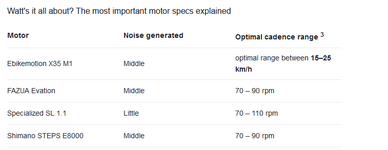AntonioAlfaro
Active Member
- Region
- Other
Totally agree. Such a small hub motor and a 250W/h battery are optimized to make the Ebike not gain much weight. It is clear that the system has an optimal point of operation and in this case Mahle recommends staying between 15 to 20 KM/h. On the flat this is easy to maintain but already on steep slopes things change drastically and if we depend a lot on the battery, we will deplete it quickly. I think we can pre-plan our outings and have a close estimate on battery consumption.
To be able to plan an outing it is essential to know what my current power profile is and to know in detail the altimetry that we will face.
I want to explain that in the next few days.
To be able to plan an outing it is essential to know what my current power profile is and to know in detail the altimetry that we will face.
I want to explain that in the next few days.
